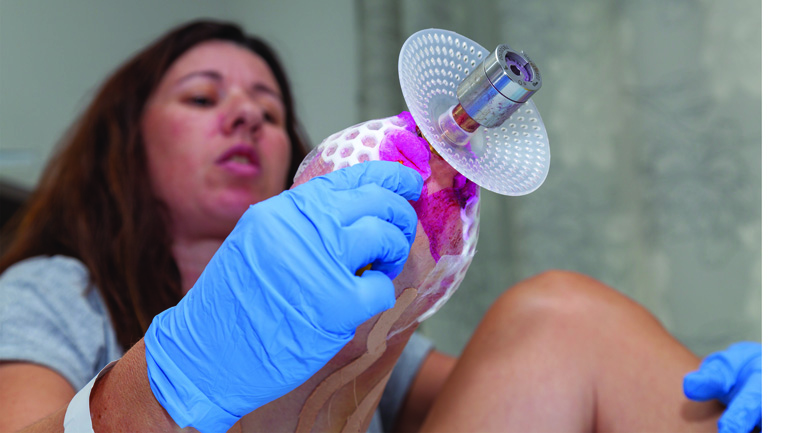
Since receiving preliminary FDA approval last December, osseointegration (OI) has become an increasingly viable option for US amputees. Unfortunately, amputees with diabetes or peripheral vascular disease (PVD)—who make up an enormous chunk of the amputee population—have generally been considered unsuitable candidates for OI.
“Poorly controlled diabetes puts you at an elevated risk of infection,” says Dr. Jason Stoneback, one of the most experienced OI surgeons in the United States, “and poor blood flow to a limb can affect good bone in-growth for the implant.”
But a recent study from Australia, where OI has been approved for more than a decade, suggests that amputees with vascular issues can thrive with OI, given proper management. Published in the Journal of Bone & Joint Surgery, the research documented the experience of six below-knee amputees who lost their limbs because of PVD. All six patients (ranging in age from 36 to 84) achieved dramatic improvements in mobility and overall quality of life in the two years immediately following OI surgery.
Three of the subjects had been full-time wheelchair users before OI. All progressed to unaided walking within a year after surgery, attaining K-level 2. The other three subjects made dramatic gains in walking speed, endurance, and agility, with two attaining K-level 3. “In fact,” the study authors noted, “five of our patients subjectively reported that the osseointegrated leg became their better leg.”
At the same time, the study affirmed some of the risks of OI for patients with PVD-related limb loss. Three of the patients developed superficial post-operative infections, which were treated with oral antibiotics. A fourth patient developed a deep infection two and a half years after surgery. When debridement and other treatment failed, surgeons had to perform an above-knee revision to control the infection. Two days after the revision, the patient died of a heart attack.
“The most important insight from our study is that vascular disease, in and of itself, is not an absolute contra-indication totranstibial osseointegration,” the authors concluded. While this small study is far from conclusive, it offers encouragement for amputees with PVD who want to consider the possibility of osseointegration.



